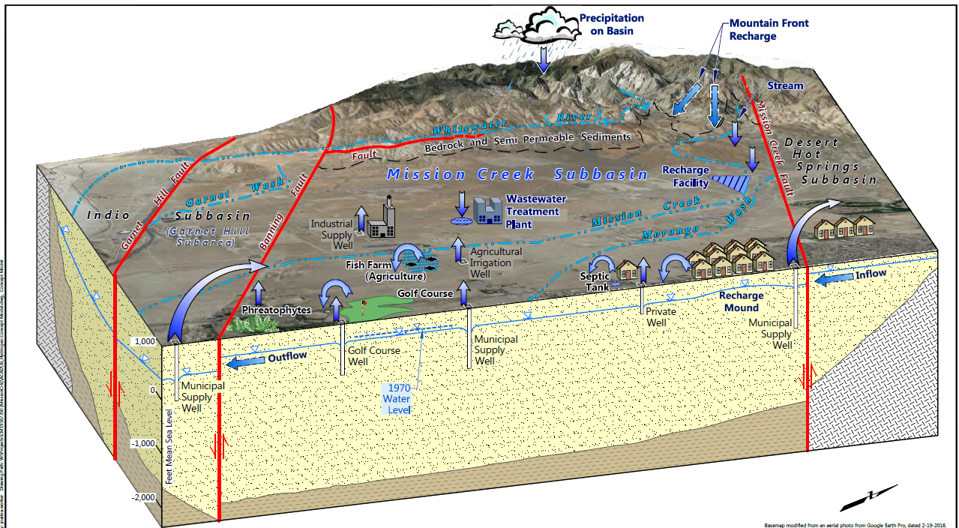How is the Mission Creek Subbasin managed?
The Mission Creek Subbasin has been managed for many years by the local water agencies. In 2003, the Mission Creek Groundwater Replenishment Agreement was enacted between the Coachella Valley Water District (CVWD) and Desert Water Agency (DWA). The subsequent 2004 Mission Creek Settlement Agreement led to the formation of the Management Committee, consisting of the CVWD, DWA, and Mission Springs Water District (MSWD). The Management Committee today continues to actively manage the Subbasin.

DWA and CVWD both have contracts for imported water and operate a groundwater replenishment program to help fund groundwater recharge into the Mission Creek Subbasin. MSWD, and other large private pumpers pay a “Replenishment Assessment Charge” for each acre-foot of groundwater pumped.


